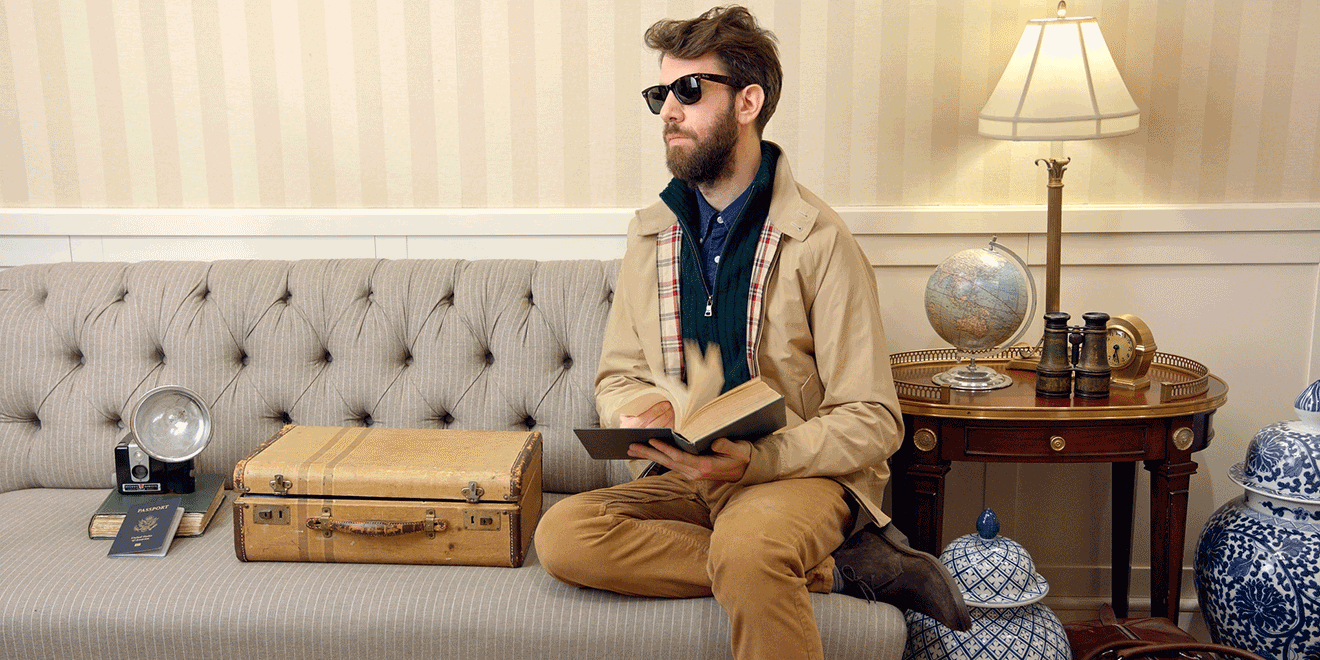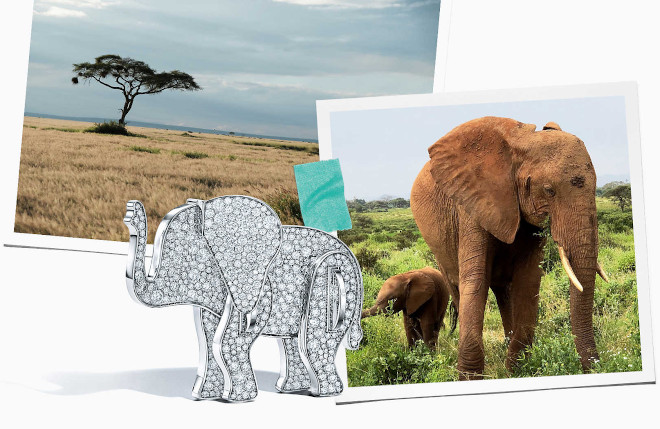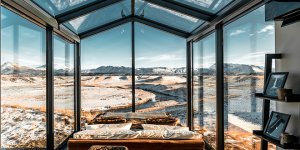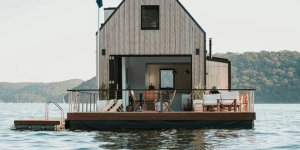How can the luxury fashion landscape strive and win, post-pandemic
Already luxury fashion is changing right now due to COVID-19 as it did during the last Great Recession and the Great Depression before it. How can brands survive and thrive?

According to confidential sources speaking to WSJ, Brooks Brothers, the men’s haberdasher and two century old menswear institution for Wall Street bankers and financiers is looking for potential buyers. Before the covid-19 pandemic, Brooks Brothers was already $600 million in debt and that the transaction could be part of a bankruptcy filings.
Brooks Brother’s current precarious position is emblematic of a bigger disruption kickstarted by the coronavirus outbreak. Operating 250 stores in the US and another 250 in over 40 countries, Brooks Brothers discovered that though their affluent banking and finance customers have been less affected by the millions of job losses, the routine of work and travel has been so vastly altered that the post-pandemic fashion landscape would not likely resemble

How will the Post-Pandemic Luxury Fashion Landscape Look and How Brands can Win
The recent live-streamed edition of CR Runway, provided a glimpse into a sort of dystopian future where models, in the comfort of their well appointed million dollar homes, strutted their garb and stuff to a YouTube audience. But as Vanessa Friedman of NYT pointed out, the show became less about the clothes and more of a voyueristic look inside the homes of the once private lives of the world’s supermodels.
Even as questions abound on whether all fashion models have such uniformly neat lifestyles arise, Kylie Jenner’s recent coronavirus photo shoot is also a stark reminder that away from the battalions of personal stylists and make up artists, celebrities and stars are very much just like us. Make up and extension free, Kylie was very much, mortal – for the lack of a better word.

Kyle Jenner had posted a lockdown selfie without make up which she quickly deleted and then in an attempt to over compensate, held a made up shoot
Even the Met Gala has lost its lustre. Held online, without the gawking at the many superstars who walked the red carpets and posed for the cameras, it no longer had its cachet and allure and judging from Time’s “Best Looks From the Virtual 2020 Met Gala Celebration” – it’s easy to understand why it has not lived up to the benchmarks of Galas past. Our society, is not only built upon unending consumption but also in the physical presence of beauty (and our ability to capture it the way our eyes do). The coronavirus pandemic has forced a reset.
Post-Pandemic, Is the fashion show still relevant or even realistic?
China accounted for 90% of global luxury market growth in 2019. As a result of Covid-19, Bain & Co predicted that global luxury sales will suffer a year-over-year decline of 25% to 30%, although there are signs of recovery in China, even if demand returns, there will be a supply side issue. Italy, where many brands are headquartered and have key suppliers, face additional challenges of operating amid a national lockdown – even as Lamborghini and a few key design labels get back to work, there are threats of a second wave from a more contagious, mutated strain of covid-19.
China might have been luxury’s growth engine but the another wildcard is the lasting damage to national Gross Domestic Product (GDP), employment and therefore spending power. With financial markets are under severe strain, the subsequent plunge in consumer confidence will definitely impact willingness to spend. Furthermore, luxury’s greatest receipts also come from tourist shopping, now an industry also in question, with global aviation affected for the next 18 months, disrupted not just by travel restrictions but the potential spread of the airborne pathogen throughout via re-circulated air and by sea, lingering contagion around cruise ships.
As early as 2018, the luxury fashion industry pondered whether the expense and the number of shows were necessary, especially in a digital, on-demand, eco-conscious environment. Coupled with the fact that consumer spending patterns were starting to shift towards experiences rather than clothing; Covid-19 wasn’t so much a game changer rather than a pace changer, accelerating the evolution of an industry already on the cusp of rethinking its current operating models.
“The first fashion shows can be traced to Paris, beginning in the mid-1800s, with designers Charles Frederick Worth, Jeanne Paquin and Jean Patou. Worth was the first to design and display his own creations for women to choose from, via a “fashion show” on live models, four times a year.” – Francesca Sterlacci and Joanne Arbuckle, the former Dean of the Fashion Institute Technology
For over a century, the Paris shows would inevitably become the template for ‘fashion weeks’ in Milan, London, and New York as we know it today. The “Big Four” cities became the largest and most important centers for fashion. In the beginning, the shows were solely for core customers, buyers and editors. The general public didn’t see the latest luxury collections until they were available in stores some four to six months later, obviously, the digital revolution has provided an immediacy that fashion had never encountered before.
“In a world that has become increasingly immediate, the current way of showing a collection four months before it is available to consumers is an antiquated idea and one that no longer makes sense,” – Tom Ford told WWD in 2016.

Tom Ford and CFDA NYFW Dinner, New York Fashion Week.
By 2015, the Council of Fashion Designers of America and the British Fashion Council, began to examine the fashion system burdened by an excessive number of shows and the relevance of showing fashion that cannot be immediately purchased (an issue also faced by its hard luxury counterpart: watches and jewellery).
A 2018 McKinsey report estimated that the fashion industry represents over $2.5 trillion dollars and on average, a 10 to 15 minute fashion show can cost anywhere from $200,000 to over $1 million but data from analytics provider Launchmetrics shows that “return on investment” (ROI) is not very straight forward when it comes to calculating the relevance of such shows.
“Today, fashion weeks are no longer industry events but are a platform to reach the digital savvy consumer, so brands need to think outside the box in order to transform their 15-minute event into something that lives on, beyond what happens on the runway. The case studies within the report shed light on how brands can generate buzz through activities such as using influencers to create 360° campaigns, changing their location to talk to new consumers and markets, or even by focusing on their own media to increase the share of wallet.” – Alison Bringé, CMO at Launchmetrics

Ralph Lauren’s anniversary Spring 2019
Launchmetrics suggested that MIV or media impact value – an algorithm which measures the impact of media placements could be a good predictor of performance outcomes. Attended by Hillary Clinton, Oprah Winfrey, Robert De Niro, Donna Karan, Calvin Klein, and Anna Wintour, Launchmetrics found that Ralph Lauren’s anniversary Spring 2019 show ranked first amongst the brands, with the highest MIV generated over the Fashion Weeks at $38 million. The data also showed that influencers garnered enormous buzz for the brand (46.2%), followed by Ralph Lauren’s owned media channels (29.7%). Overall, an influencer like “The Blond Salad” Chiara Ferragni achieved the same MIV as Versace with $18.3 million, topping the charts as a top “influencer”, however Covid-19 has put an end to this, so even MIV returns are now a question mark.
With Covid-19 permeating all aspects of life: Travel, parties, and dining are cancelled, as are the number of potential locations to “dress for the gram” – the influencer industry is as good as dead. Their followers, enduring uncertainty, are even less moved by humble-brags of new swag, and anyone posting such things can easily look detached or tone deaf. Social media influencer Arielle Charnas sparked outrage in March when she disclosed she tested positive for COVID-19 at a time when testing was virtually unattainable. When she attempted to mitigate the backlash by claiming she was screened by a friend who happened to be a doctor, the furore increased with people saying that she was privileged and had received preferential treatment at a time when many sick people, including healthcare workers, were unable to get diagnoses. Public anger hit fever pitch when she retreated to the Hamptons, posting photos of herself by the pool with a caption: “Fresh air” and accompanied with a prayer hands emoji. By the end of the week, the post was deleted.
The coronavirus pandemic has in effect fundamentally exacerbated the perception between the haves and have nots: when anxiety is peaking, privilege screams louder. Prompting a satirical piece from Babylon Bee of celebrities spelling “We are all in this together” in their yachts – a loaded statement during these tumultuous times when some have access to resources while others don’t. For brands and influencers not out to seek drama, striking the right tone can prove to be extremely difficult.
The Great Depression influenced a decade of design and strategy
When millions lost their jobs during the 2007 global financial crisis, consumer spending plummeted to such a degree that by November 2008, premier luxury retailer Saks slashed prices by 70% to move inventory; peers Barneys and Neiman Marcus followed suit and for close to a decade, merchandisers became more conservative, stocking less new inventory and focusing on popular old favourites instead.

Sotheby’s sold 1930s-era ‘Tutti Frutti’ bracelet by Cartier for $1.34 million in an online auction earlier this week, achieving the highest price for a piece of jewelry ever sold online.
The middle class may have stopped spending but the wealthy are still shopping. It appears that revenge spending, an activity where affluent consumers spend out of boredom and a sense of normalcy can be defined in two categories: ostentatious spending – like when Ronaldo splurged $9 million on a Bugatti Chiron and non-ostentatious spending where there was some pushback against items with noticeable logos, and brands like Bottega Veneta with subtle but still iconic designs gained popularity.
“How do you get someone to buy a new car? You curve the headlights, change the color.” – Sarah Lichtman, a professor of design history at New York’s Parsons School of Design
Aesthetics of consumer goods are largely shaped by the economic circumstances under which they were created. Industrial design as formed in the crucible of the Great Depression, as a profession and a new industry, industrial designed focused on elevating the look of mass-produced consumer goods on everything from automobiles to toasters as brands looked for new ways to inspire consumption.
Indeed, everything from your art deco SMEG fridge to the design cues from Philippe Starck products can find their foundations in Depression-era industrial design where rounded edges and sleek shapes defined the modernist, almost futurist expectations for a brighter future.
The Great Recession, following almost 80 years after the Depression, saw venture-backed lifestyle startups like Everlane (now in a spot of trouble themselves) and Warby Parker rather than established mega-brands giving consumers a glimpse of hope, and they did so through a model of direct-to-consumer sales and digital marketing with messages of authenticity, transparency of economics and production – the very things which appealed to millennial and hipster consumers but what truly won over a generation of consumers was the bare-faced honesty (or the appearance of) with clean design, sans serif typefaces and tons of white face – it was the personable branding and welcoming honesty that created a sense of shared values with its suffering consumer market. It was a wave of design massively influenced by the launch of Apple’s iPhone in 2007, adding to the emotional resonance of a consumer technology game changer, the influences of simplicity and minimalism in design extended in all sectors including real estate and interiors.

Phoebe Philo at Celine
Phoebe Philo to Alessandro Michele: Does the Pandemic spell the end of Luxury and Hype?
The understated womenswear introduced by Phoebe Philo at Celine which became the template of normcore became a trend which lasted till 2015 when Alessandro Michele heralded the re-introduction of maximalism at Gucci. By 2016, Kering Group’s darling was riding the wave of bold prints and the glitter of maximalist jewellery and accessories to sky-rocketing sales and generous logo motifs.
From Louis Vuitton and Supreme, luxury fashion rode the crest of growing exuberance as the economy improved and the largest number of high net worth individuals were minted in fiscal year 2019. Even home decor returned to bright velvet furniture and lush interior fixtures and then, as the first quarter of 2020 ran, it became apparent that the bling train was coming to a stop as incomes declined and entire markets entered an economic and medical lockdown.

June fashion weeks have been cancelled or postponed; $3 billon worth of orders were either cancelled or delayed and most tellingly, Wall Street was voting with their wallets as shares and bonds for giant companies like Versace, Michael Kors and Coach plummeted.
And now, with celebrities and influencers are getting called out, it has prompted some soul searching but it sure has not ended the practice of conspicuous consumption. A muted two years after the great recession, luxury expenditure returned with a vengeance, shooting up LVMH stock value and attracting a billion dollar valuation for Supreme, heralding a new wave of streetwear inspired luxury. While these are not similar circumstances, brands would do well to heed the lessons of history.

Strategies for Post-Pandemic Recovery
McKinsey’s May report titled: Reimagining the post-Covid-19 economy mirrors many of the lessons learned from the rise of new strategies envisioned in previous economic downturns. To recover short-term revenues, the business consultancy recommends SHAPE:
- Start-up mindset: Much like millennial fashion start-ups, being reactive and ready to pivot to new market trends will give brands the agility they need to effectively communicate and inspire their targeted market segments.
- Humans at the core: Companies will need to rethink their operating model based on how their people work best. Authenticity needs to be something that is as much external as it is internal. 60% of businesses surveyed by McKinsey in early April said that their new remote sales models were proving as much (29%) or more effective (31%) than traditional channels.
- Acceleration of digital, tech, and analytics: There’s a meme out on social media that Covid-19 has been the biggest accelerator of digital change and disruption. While live-streamed shows straight from the homes of models might not be the way forward for fashion, expanding and enhancing digital channels is the way forward. Alibaba, a Chinese multinational technology company specializing in e-commerce, retail and Internet technology, is investing $40.2 billion in cloud computing services – what this means is that the company which already owns the largest c2c and b2c platforms, Taobao and Tmall are about to expand their lead even further. Social distancing will be the new normal for the foreseeable future, and that will affect not only impact design and how consumers dress, it will also be how brands communicate with their consumers moving forward.
- Purpose-driven customer playbook: Companies need to understand what customers will value, post-COVID-19, and develop new use cases and tailored experiences based on those insights.
- Ecosystems and adaptability: Given crisis-related disruptions in supply chains and channels, adaptability is essential. That will mean changing the ecosystem and considering nontraditional collaborations with partners up and down the supply chain.

Once brands are in good SHAPE, their next steps lie in:
Identifying and prioritising revenue opportunities: launching targeted campaigns to win back loyal customers; developing customer experiences focused on increased health and safety; adjusting pricing and promotions based on new data; reallocating spending to proven growth sources; reskilling the sales force to support remote selling; creating flexible payment terms; digitizing sales channels; and automating processes to free up sales representatives to sell more.
Acting with agility and urgency: Brands who survived and thrived in the great recession and great depression worked faster and better, keeping eyes on a sense of possibility and potential that became an enduring source of competitive advantage. Transport companies like Uber adapted to rapidly changing circumstances by converting passenger fleets to food delivery as F&B industries shut their shopfronts. Five days ago, it was reported in Bloomberg that American Apparel owner Gildan Activewear Inc. which pivoted during the early days of the pandemic, to making hard-to-find personal protective equipment, is now considering making the temporary business permanent. Gildan is planning to make 150 million masks and gowns out of facilities in Honduras and Nicaragua, with a U.S.-based yarn-spinning factory also set to partly reopen for the project. It has been documenting the process on social media, featuring employees who’ve returned to work, while about 95% of its 51,000 staff stay at home.

While of course, most luxury brands would decline to pursue such a pivot, there are key takeaways from an accessories perspective – with some companies already producing bespoke face-masks and protective gear for consumers who have to make such accessories a way of life for when the economy re-opens and commutes to work begins again – though there are signs that working for home may become a permanent fixture of the new work week, companies might do well to reconsider loungewear lines or smart casual workwear for the face-to-face Zoom meetings from time to time.
Adapting to newly formed habits like digital shopping: When it is safe to do so, consumers are expected to return to physical stores (possibly with a renewed passion for in-real-life experiences), but some digital shopping habits built during the outbreak will stick—especially if brands raise their game in online assortment, user experience and digital marketing. Psychologically speaking, it only takes 40 days for new habits to form and our lockdowns have already entrenched online shopping habits for specific goods and services, businesses had best look at their data and determine what goods they should be leaning into and structure their digital channels accordingly.

Tiffany ranked among the top 100 US brands for sustainability, the only jewellery brand to do so.
Heightened environmental and social consciousness: From the many social media posts about “nature reclaiming what was lost” as animals roam largely empty city streets, consumer concern about sustainability and social issues will not only continue, but with growing awareness that non-consumption didn’t hurt them during the lockdown, they might place greater emphasis on the importance of environmental and social governance. Forward thinking brands may have to rethink the end-to-end product life cycle and supply chain management as consuming habits shift and evolve.
Rise of a post-aspirational mindset: Ethics will become as important as aesthetics as consumers prioritise purposeful brands which symbolise resiliency and personal values that have endured harsh conditions.
Strengthened local pride: Public opinion during the outbreak has sometimes stigmatised certain nations, triggering assertive displays of cultural pride in those territories. Brands need to avoid inflaming these local sensitivities and also consider the quantifiable dangers of real-life supply chain and logistics issues in focusing growth strategies around one specific country.

Expanding need for inclusion: Brands will need to use all their ingenuity to revamp their offer at accessible price points, reflecting the reduced spending power of many middle-class customers. While this may not be ideal from a branding perspective, there’s a growing body of consensus that conversations about luxury should not revolve around price. Writing for JingDaily, Daniel Langer said it best: When asked what luxury is, many people answer “expensive.” But this is only a reflection of the value a luxury item or brand creates.
Luxury is all about extreme value creation. No consumer will buy a luxury brand if the price seems too high, and when it seems too high, that means the price is exceeding the brand’s perceived value. Luxury brands’ number one task is to create extreme value. The value in luxury is not connected to products and features — it’s connected to brands. The product is important (design, quality, materials, craftsmanship) but the main value driver in luxury is Added Luxury Value (ALV), which is the result of tangible and intangible effects that people intuitively connect to a luxury brand. ALV is driven by a brand’s equity rather than the sum of its product features.
The winner of the new post-pandemic economy will be one which is able to best offer its brand’s equity and communicate its Added Luxury Value. This isn’t a matter of simply offering “accessible” price points but communicating that perceived value is much higher than what it costs on the price tag.







